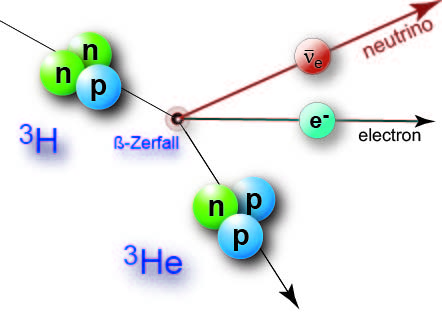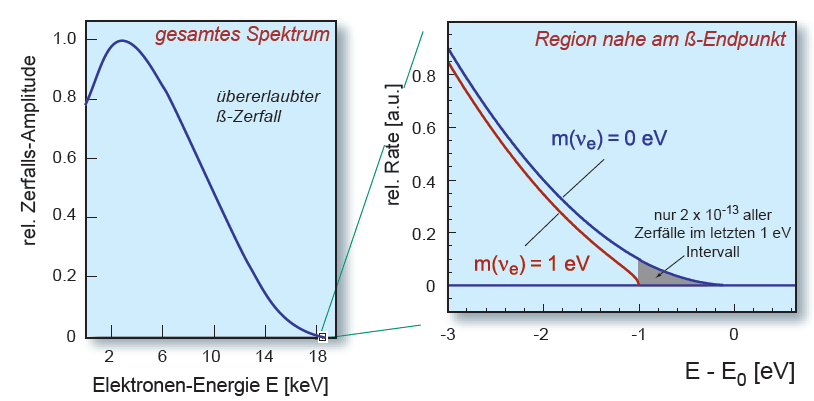Neutrino mass measurement with tritium
KATRIN is the most sensitive instrument to measure a mass. Neutrino masses as tiny as 10-36 kg would be measured with KATRIN. This is achieved via the spectroscopic energy measurement of the beta-electrons from tritium beta-decay with the KATRIN spectrometer. The fixed energy amount released in a beta decay (e.g. tritum 3H) is shared by the electron, the neutrino and the nuclear recoil (e.g. 3He). When we now look for the maximum energies of the electrons and compare the measured values to the transition energy, we can check if it sums up together with the known nuclear recoil to the transition energy. If there is no difference the neutrino must be massless, if there is a difference this energy gap can be calculated with Einsteins famous formula into a neutrino mass. In practice of course, it turns out to be a little bit more complicated, as we have molecular tritium which in addition can rotate and vibrate. Another complication is that the transition energy is not known from theory and must also be inferred from the measurement. Nevertheless, the tritium spectrum at its endpoint together with some theoretical and experimental corrections are known at such a good level, that this kind of measurement is regarded as a mode-independent method to measure the neutrino mass. This model independency makes KATRIN so valuable for particle physics and cosmology. The experimental challenges of course are a tritium source with sufficient beta decays near the endpoint, where this principle only works and a spectrometer, which measures the kinetic energy of the electrons with 10-5 precision. The KATRIN experiment unifies these requirements and published in 2019 its first results.


